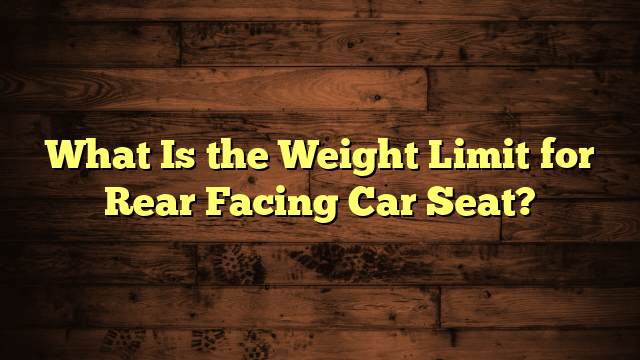What Does Sip Mean on Car Seat?
When you see "SIP" on a car seat, it refers to Side Impact Protection, a crucial feature aimed at enhancing your child's safety during side collisions. Understanding how this technology works and its significance can help you make informed choices when selecting a car seat. You might wonder what specific elements contribute to effective SIP and how it compares to other safety features. Let's explore these aspects further to grasp the full impact of SIP on your child's protection.
Key Takeaways
- SIP stands for Side Impact Protection, designed to enhance child safety during side collisions in car seats.
- SIP features include energy-absorbing foam and reinforced structures to deflect collision energy away from the child.
- Car seats with SIP significantly reduce the risk of head and neck injuries by up to 50% in side crashes.
- Proper installation of SIP-equipped car seats is crucial for maximizing their effectiveness in real-world scenarios.
- High safety ratings for car seats often indicate the presence of effective SIP technology, ensuring better protection.
Understanding Side Impact Protection
Side Impact Protection (SIP) plays an important role in keeping your child safe while traveling in a car seat. When you're on the road, side impact collisions can pose serious risks. That's where SIP comes into play. Car seats with effective SIP features are designed to absorb and deflect energy away from your child during a side impact.
Most modern car seats utilize energy-absorbing foam or reinforced structures to provide this vital protection. You'll notice that many car seats come with side wings or head support, which help shield your child's head and neck from injury. These features create a protective shell that works to minimize movement during a collision.
It's also important to ascertain that the car seat is properly installed. A correctly installed car seat maximizes the SIP capabilities, allowing it to perform as designed.
Always check the manufacturer's guidelines for installation and weight limits to guarantee peak safety.
Importance of SIP in Car Seats
When you choose a car seat, understanding the importance of Side Impact Protection (SIP) is essential for your child's safety.
SIP not only enhances protection during side collisions but also aligns with crash test standards to guarantee reliability.
Enhanced Side Impact Protection
Car seats equipped with Enhanced Side Impact Protection (SIP) greatly improve your child's safety during a collision.
These systems are specifically designed to absorb energy and reduce the risk of injury during a side impact, enhancing your child's overall protection. By understanding the importance of SIP, you can make informed choices for your car seat selection.
Key benefits of Enhanced Side Impact Protection include:
- Energy-Absorbing Materials: SIP car seats use advanced materials that absorb crash energy, minimizing the force transferred to your child.
- Reinforced Shells: The design of these seats often includes reinforced shells that provide additional protection against side impacts, adapting to various crash dynamics.
- Head and Body Support: SIP features often include additional head and body support, keeping your child secure and stable during a collision.
Incorporating Enhanced Side Impact Protection into your car seat choice is essential for ensuring your child's safety.
Crash Test Standards
Understanding crash test standards is vital to evaluating the effectiveness of Enhanced Side Impact Protection (SIP) in car seats. These standards, established by organizations like the National Highway Traffic Safety Administration (NHTSA), set specific crash test criteria that manufacturers must meet to guarantee safety during a vehicle impact.
When a car experiences a side collision, the potential for injury increases, making SIP essential in reducing that risk.
Crash test criteria assess how well a car seat can protect a child's head, neck, and torso during such impacts. The tests simulate various accident scenarios, allowing you to gauge the car seat's performance in real-world conditions.
SIP features, like energy-absorbing materials and design elements that cradle the child, are specifically designed to meet these criteria.
Overall Safety Benefits
Enhanced Side Impact Protection (SIP) in car seats plays an essential role in ensuring your child's safety during an accident.
When it comes to protecting your little one, SIP isn't just a buzzword; it's a critical feature that can considerably reduce injury risk. Accident statistics show that side impacts can be particularly dangerous, making SIP a crucial consideration when choosing a car seat.
Here are some key benefits of SIP:
- Improved safety ratings: Car seats with SIP often receive higher safety ratings from regulatory bodies, providing peace of mind.
- Energy-absorbing materials: SIP features materials designed to absorb and dissipate impact forces, reducing the likelihood of injury.
- Enhanced structural integrity: SIP reinforces the car seat's overall structure, offering better protection against side collisions.
How SIP Works in Accidents
When a collision occurs, Side Impact Protection (SIP) systems play an essential role in safeguarding your child. SIP is designed to absorb and distribute the energy generated by an accident impact. This minimizes the force transferred to your child's body, considerably reducing the risk of injury during side crashes.
The key to SIP's effectiveness lies in its structural design. Typically, it includes reinforced side panels and energy-absorbing materials that help cushion your child's head and torso. When the car is struck from the side, these safety measures work together to create a protective barrier, ensuring your little one stays securely in place.
Additionally, SIP systems often feature adjustable headrests that can be tailored to your child's height. This not only enhances comfort but also increases protection during an accident.
The combination of proper installation and SIP features provides an extra layer of security, helping to prevent serious injuries.
Features to Look for in SIP
When choosing a car seat with SIP, you should look for enhanced side protection that shields your child in case of a collision.
Furthermore, consider easy installation options, which can make securing the seat a breeze, ensuring safety from the get-go.
Both features play an essential role in providing peace of mind during every ride.
Enhanced Side Protection
Side Impact Protection (SIP) is essential for guaranteeing your child's safety in a car seat, and it's important to know what features to look for. As you explore safety advancements in car seats, keep an eye out for enhanced side protection features that greatly reduce the risk of injury during a side impact.
Here are some key features to take into account:
- Energy-Absorbing Foam: Look for car seats that incorporate high-quality foam designed to absorb and dissipate impact forces.
- Side Wings: Many models come with protective side wings that provide extra cushioning and structural support, keeping your child secure.
- Reinforced Shell: A sturdy, reinforced outer shell can help absorb energy during an accident, offering improved protection for your child.
These features not only enhance SIP but also contribute to overall safety during your travels.
By prioritizing these advancements, you can guarantee that your car seat offers the best possible protection for your little one, giving you peace of mind while driving.
Easy Installation Options
Choosing a car seat with enhanced safety features is only part of the equation; easy installation options play a significant role in guaranteeing your child's protection. When you're looking for a seat, prioritize user-friendly features that make the installation process as straightforward as possible.
Look for car seats equipped with a simple latch or belt system. These systems allow you to secure the seat quickly and accurately, reducing the risk of improper installation. Many models even come with indicators that show when the seat is correctly installed, giving you peace of mind.
Another feature to take into account is the ease of adjusting the harness and headrest. Car seats that allow for one-hand adjustments can save you time and hassle, especially when you're juggling a child and other items.
Additionally, some seats offer a base that stays in your vehicle, allowing you to easily click the seat in and out as needed. This not only simplifies the process but also guarantees your child remains safe and secure every time you drive.
SIP vs. Other Safety Features
Understanding the importance of safety features in car seats is essential for every parent. SIP technology, or Side Impact Protection, is one of the standout features designed to enhance your child's safety in the event of a collision.
While many car seats come equipped with various protective measures, SIP has unique advantages that set it apart.
Here are some key points to reflect on when comparing SIP to other safety features:
- Enhanced Protection: SIP technology specifically guards against side impacts, reducing the risk of injury.
- Stability: SIP provides added stability to the car seat, ensuring it stays securely in place during an accident.
- Comfort: Many SIP-integrated seats come with additional padding, increasing comfort while maintaining safety.
While features like harness systems and energy-absorbing foam are essential, SIP advantages make it a significant component of modern car seats.
It's not just about meeting safety standards; it's about exceeding them. By choosing a car seat with SIP technology, you invest in a product designed to protect your child from all angles, providing peace of mind every time you hit the road.
Your child deserves the best protection, and SIP is a smart choice.
Choosing a Car Seat With SIP
When it comes to picking a car seat for your little one, opting for a model with Side Impact Protection (SIP) can make a significant difference in safety. SIP enhances car seat design by adding extra cushioning and structural elements that absorb crash forces, especially in side collisions. This is essential, as studies show that side impacts can lead to severe injuries.
When choosing a car seat with SIP, consider the safety ratings provided by independent organizations. These ratings evaluate how well a car seat performs in crash tests, including side impact scenarios. Look for seats that have high ratings, as they indicate better protection for your child.
Also, keep in mind the age and size of your child. Some car seats are designed specifically for infants, while others accommodate toddlers and older children. Make sure the car seat you choose fits your child well and allows for proper installation in your vehicle.
Finally, don't underestimate the importance of user reviews. Parents often share their experiences, which can offer valuable insights into the car seat's safety features and ease of use.
Prioritizing these aspects will help you select the best SIP-equipped car seat for your little one's safety.
Real-World SIP Performance Statistics
Car seats equipped with Side Impact Protection (SIP) not only promise safety features but also show impressive performance in real-world scenarios. Studies on real-world testing reveal that these car seats considerably reduce the risk of injury during side-impact collisions.
Accident statistics indicate that children in SIP-equipped car seats are less likely to sustain serious injuries compared to those in standard models.
Here are some key points to take into account:
- SIP car seats have been shown to decrease head and neck injuries by up to 50% in side-impact crashes.
- Real-world testing indicates that SIP features absorb and distribute force, enhancing overall safety.
- Research highlights that most accidents occur within a short distance from home, making SIP protection essential for everyday trips.
These statistics underscore the importance of investing in a car seat with SIP. When you choose a model with these protective features, you're not just following recommendations; you're actively safeguarding your child's well-being.
Frequently Asked Questions
Is SIP Required by Law for All Car Seats?
Sip regulations aren't universally required by law for all car seats. However, you should prioritize sip safety in your choices, ensuring your child's car seat meets current standards for maximum protection while traveling.
Can SIP Technology Wear Out Over Time?
Yes, sip technology can wear out over time. You should be aware of sip durability concerns, as its lifespan may diminish with frequent use and exposure to wear and tear, impacting your car seat's effectiveness.
Are There Specific Brands Known for Better SIP?
When it comes to brand comparisons, some brands shine brighter than others. You'll find those with higher safety ratings often prioritize SIP technology, like Britax and Nuna, ensuring your child stays safe on every ride.
How Do I Maintain the SIP Features in My Car Seat?
To maintain the sip features in your car seat, follow proper cleaning guidelines and check installation tips regularly. Keeping it clean and correctly installed guarantees peak safety and performance for your child's protection.
Can SIP Be Added to an Existing Car Seat?
You can't just magically add SIP to your car seat, but there are retrofit options available. Explore various SIP installation methods to enhance safety and comfort, transforming your existing seat into a fortress for your child.
Conclusion
Incorporating Side Impact Protection in your child's car seat isn't just a smart choice; it's like wrapping them in a fortress of safety. With SIP's energy-absorbing materials and clever designs, you're considerably reducing the risk of injury in a crash. Imagine knowing your little one is shielded from harm, even in the most unpredictable circumstances. So, when choosing a car seat, prioritize SIP—because every ride should feel like a cozy, protective bubble, regardless of the road ahead.
- Can I Get in a Taxi Without a Car Seat? - January 26, 2025
- Can I Get Chlamydia From a Toilet Seat? - January 26, 2025
- Can I Get an Uber With a Car Seat? - January 26, 2025






